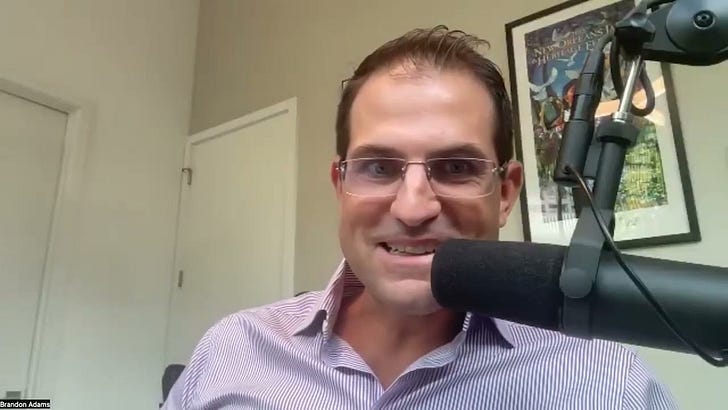If you had a year to read only about the subject of inflation, what would you read?
I’m eager for suggestions in the comments.
The subject of inflation is not generally well understood, and the list of books on the topic is not as impressive as one might guess.
Let me start by providing a list of books that I once compiled for an international macroeconomics class. These are books I’ve read, sometimes more than once. I’ve grouped them in three categories - A (best), B, and C.
A (the best books)….
Debt and Delusion. Peter Warburton
This Time is Different. Ken Rogoff, Carmen Reinhart
The Changing World Order. Ray Dalio (I reviewed this book on my Substack on Jan 17, 2022)
Fragile by Design: The Political Origins of Banking Crises and Scarce Credit. Charles Calomaris, Stephen Haber
Monetary Regimes and Inflation. Peter Bernholz
B
Dying of Money. Jens Parsson
Big Debt Crises. Ray Dalio
Debt: The First 5000 Years. David Graeber
The Great Demographic Reversal. Charles Goodhart, Manoj Pradhan
And the Money Kept Rolling In and Out. Paul Blustein
C
The Holy Grail of Macroeconomics. Richard Koo
The Great Inflation and its Aftermath. Robert Samuelson
New Paradigm in Macroeconomics. Richard Werner
When Money Dies. Adam Fergusson
The Rise and Fall of Monetarism. David Smith
Germany 1923. Volker Ullrich.
I’ll say that none of these are THE book on inflation. It doesn’t exist, as far as I know. All have their flaws. The all-around best on this list is probably Peter Bernholz’s Monetary Regimes and Inflation.
Peter Bernholz accepts the Philip Cagan convention that the term hyperinflation should be reserved for situations where monthly inflation in at least one month reached 50 percent or more. That means there’s been at least one month where, over the course of the month, the general price level advanced by at least 50%. Bernholz points out that hyperinflations are almost entirely a 20th century phenomenon. The one exception, in his view, is the French hyperinflation during the Revolution of 1789-1796.
Logically, the starting point for our Inflation Reading Year should be the French hyperinflation. I should note that there were other episodes of pre-20th century hyperinflations that Bernholz ignores. He seems to ignore instances of hyperinflation that related to regime failure or near-failure as a result of war, for example the Confederate hyperinflation of 1864-1865, the Revolutionary War hyperinflation (in “Continentals”), and the Austrian hyperinflation during the Napoleonic Wars. There were also inflations in Rome 235-284AD and the Ming Dynasty (14th and 15th centuries) that, while very severe, did not quite reach the level of hyperinflation.
Although disconnected in time by seventy years, the starting point for an examination of the French hyperinflation has to be reading on the history of John Law. A good source here is the relevant chapters of Edward Chancellor’s The Price of Time: The Real Story of Interest (I did a podcast with the author that I’m linking at the bottom of this post). A book on John Law that is well-regarded is The Politics of Utopia by Arnaud Orain (I haven’t read it); another is Janet Gleeson’s Millionaire.
Law is the unlikely father of modern central banking. John Law’s experiment, in which paper currency was backed by French colonial trading rights in North America (the Mississippi Company), failed dramatically when the “Mississippi Bubble” collapsed in 1720. Short of options, however, the French Revolutionary government invoked a similar scheme, issuing large amounts of “assignats” that were initially backed by confiscated church lands.
The best book on the French revolutionary era is thought to be Jeremy Popkin’s A New World Begins: The History of the French Revolution. I’ve read half of it. It’s a dense read with, as my friend puts it, “too many names.”
Where else would we go on a year-long inflation tour?
Let’s start with books I’ve read.
I recommend The Money Illusion by Scott Sumner, especially Chapter 3, “What Determines the Value of Money.” On page 44, he has a reprint from empirical work by Robert Barro on the relationship between money growth and price level in many countries; it’s very strong evidence on the tight connection of money growth and inflation over long periods.
If we have a year, an interesting argument is whether we should dive into Anna Schwartz and Milton Friedman’s A Monetary History of the United States, 1867-1960. Perhaps controversially, I’d argue that we shouldn’t; the time could be better invested. Enough problems with their data and analysis have been pointed out over time that the reader is better off skipping in favor of more modern sources.
I recommend, from Jeffry Friedan’s Currency Politics, Chapter 6, “The Political Economy of Latin American Currency Crises.” I also recommend Alan Blinder’s A Monetary and Fiscal History of the United States, 1961-2021.
Now onto books that I haven’t read.
I’ve read parts of John Cochrane’s The Fiscal Theory of the Price Level. Finishing it would be quite an investment. You might do better ingesting his clearly written blog (The Grumpy Economist, previously on Blogspot and now on Substack). You might also try Brad Delong’s summary of the fiscal theory of the price level on pages 179-185 of Slouching Towards Utopia.
Books that I haven’t read (but I’ve heard are good and should be on the year-long list)….
Venezuela’s Collapse: The Long Story of How Things Fell Apart. Carlos Lizzaralde.
Strategies for Monetary Policy. John Cochrane and John Taylor. This is on modern monetary policy, not on inflationary episodes in particular.
The Behavioral Economics of Inflation Expectations. Tobias Rotheli.
The Economics of Inflation - A Study of Currency Depreciation in Post War Germany. Constantino Bresciani-Turroni.
Three Days at Camp David. Jeffrey Garten.
Please let me know what I missed!
Edward Chancellor interview:
Brad Delong interview:




Has anyone read "Letters of a Bank Director to his Son"? I've seen it recommended but I haven't read it myself.
https://www.goodreads.com/book/show/60042803-the-essence-of-money